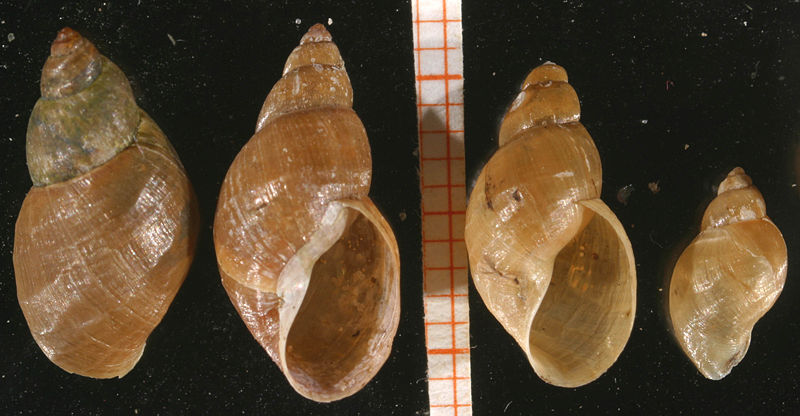
Classification
Domain: Eukarya - Organisms whose cells contain membrane-bound organelles (Hickman).
Kingdom: Animalia - Organisms that are multicellular and heterotrophic (do not make their own food) (EOL).
Phylum: Mollusca - Second largest invertebrate animal phylum after the arthropods. The typical mollusc body plan includes a head, visceral mass, a ventral muscular foot, mantle, and in most cases a shell (Hickman).
Class: Gastropoda - Largest and most diverse mollusc group. The name means "belly foot". They are distinguished from other molluscs by torsion, which is a 180° twisting of the visceral mass (Hickman).
Subclass: Pulmonata - Contains most land and freshwater snails and slugs. Usually lack gills, and their mantle cavity has become a lung (Hickman).
Order: Basommatophora - Water pulmonate snails. Distinguished from terrestrial pulmonate snails by having two, instead of four, tentacles, and the eyes at the base of the tentacles. The name means "base-eye snails" (Nordiseck).
Family: Lymnaeidae - Pulmonate freshwater snails, the shells of most are more rounded spirals (EOL).
Genus: Stagnicola - Medium sized gastropods whose shells have gradually increasing whorls and anthracite black pigmentation (Beran). Latin meaning: Stagnant, as in the stagnant waters where these snails typically live.
Species: Stagnicola walkeriana - The species S. walkeriana is distinguished from others in its genus by the unique characteristics of its shell (Baker).
Common Name: Calabash Pondsnail (Baker) - I was unable to find a direct reason the snail received this common name, however, for more information about the word "calabash" check this out!
See where this species likes to hang out!